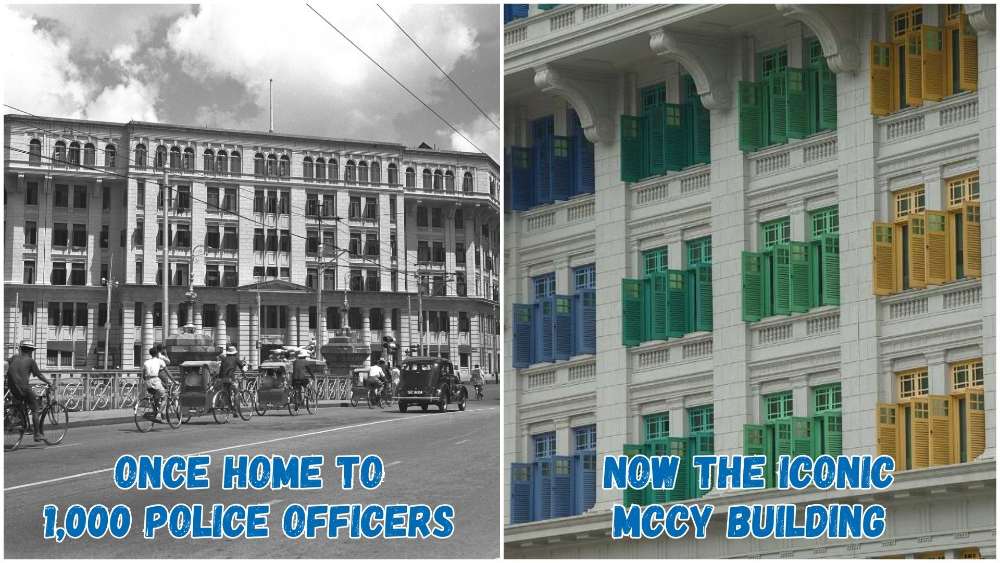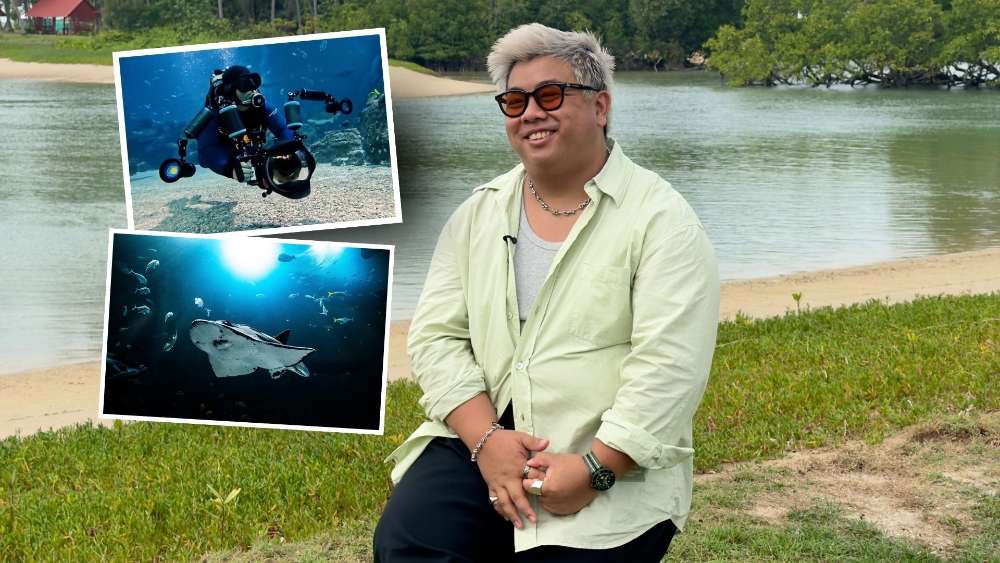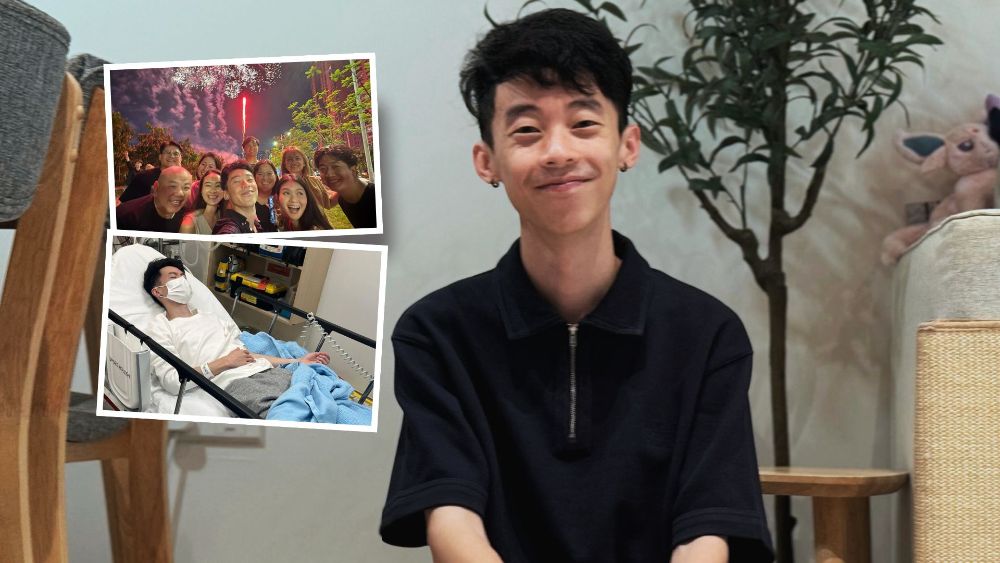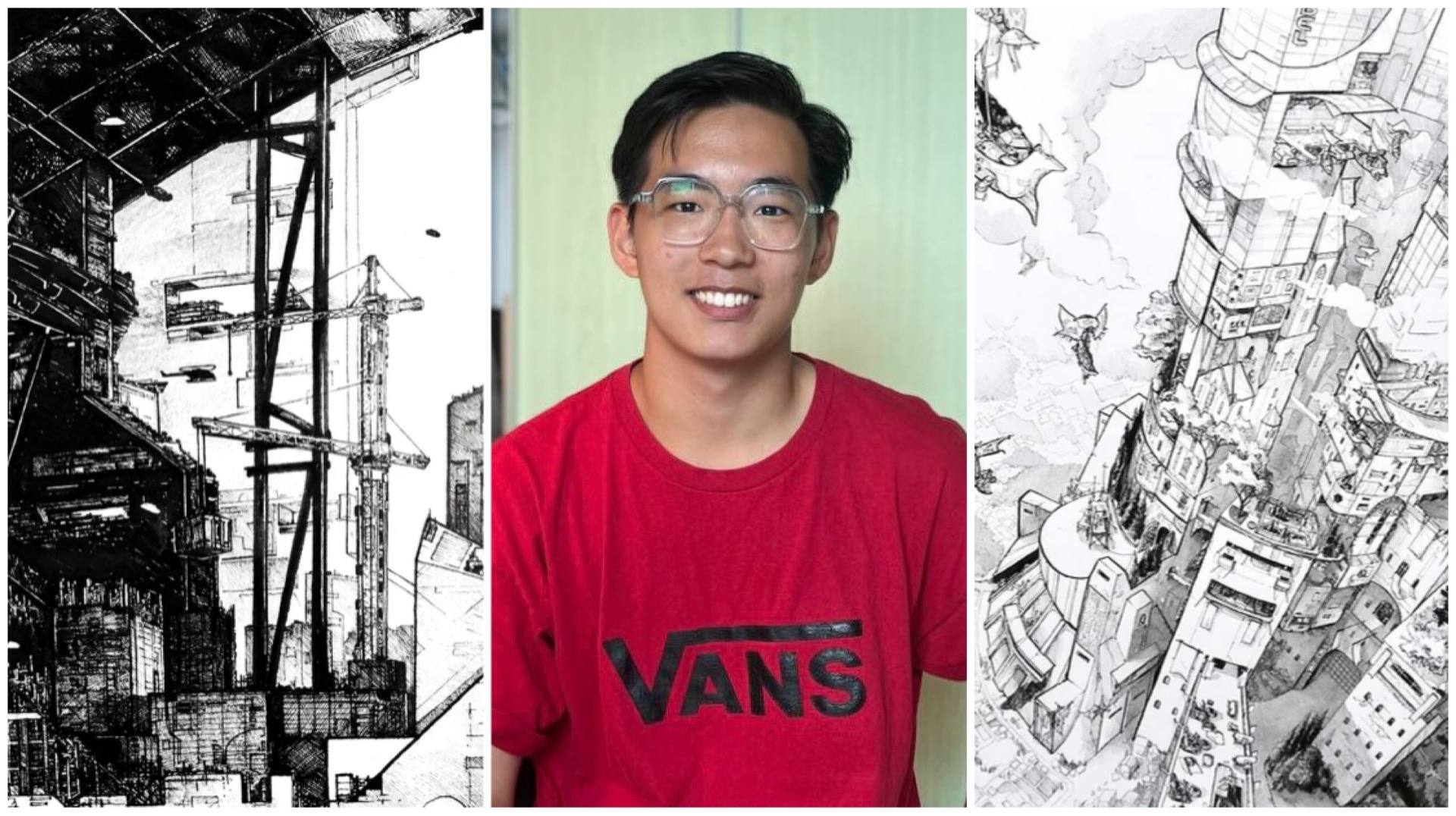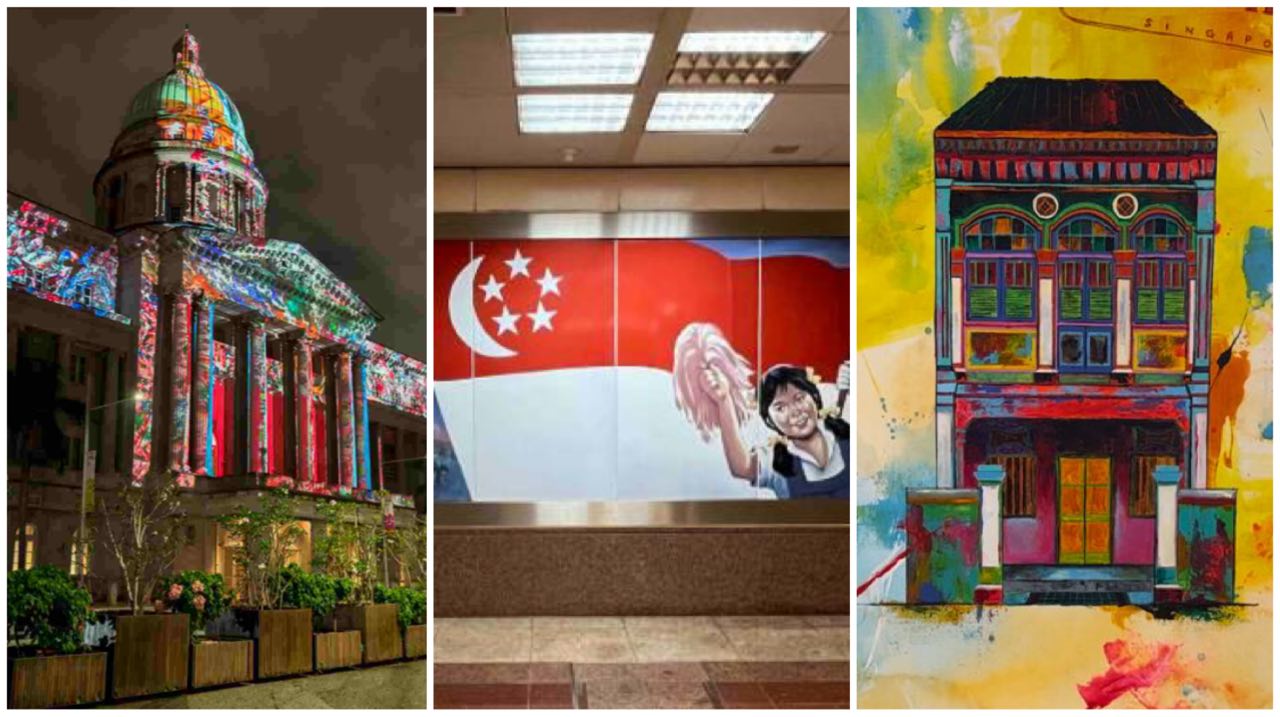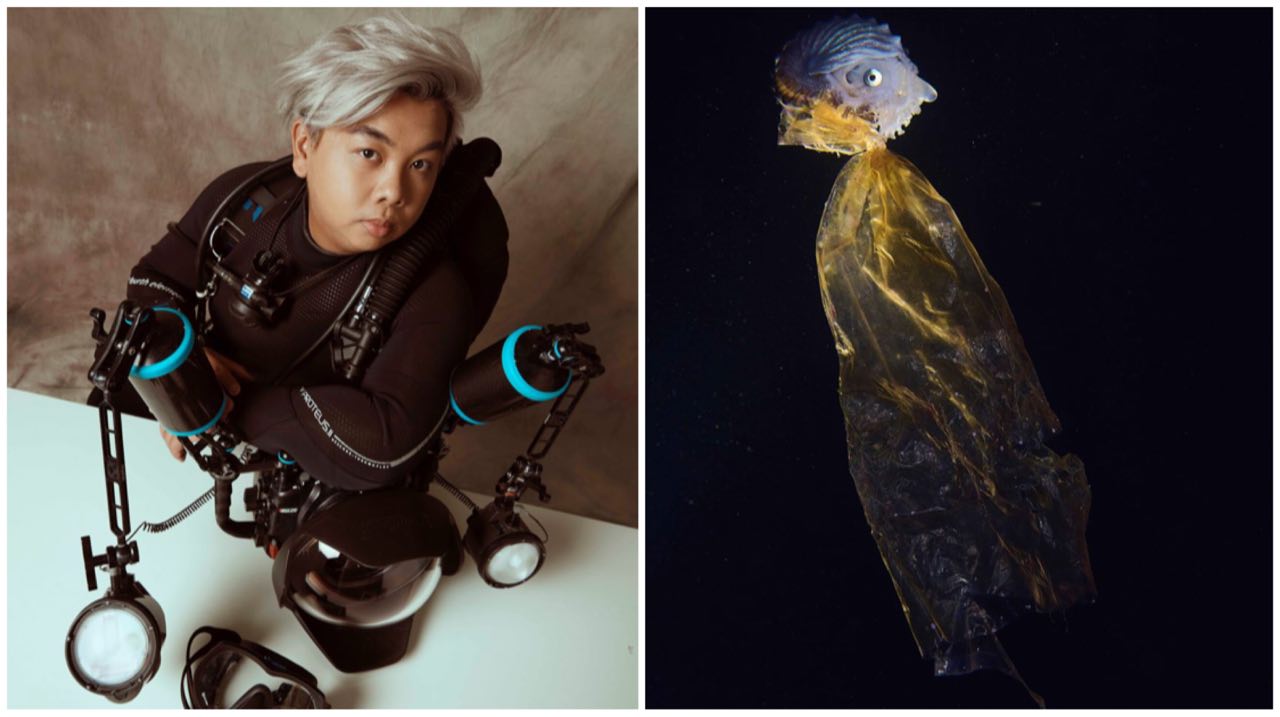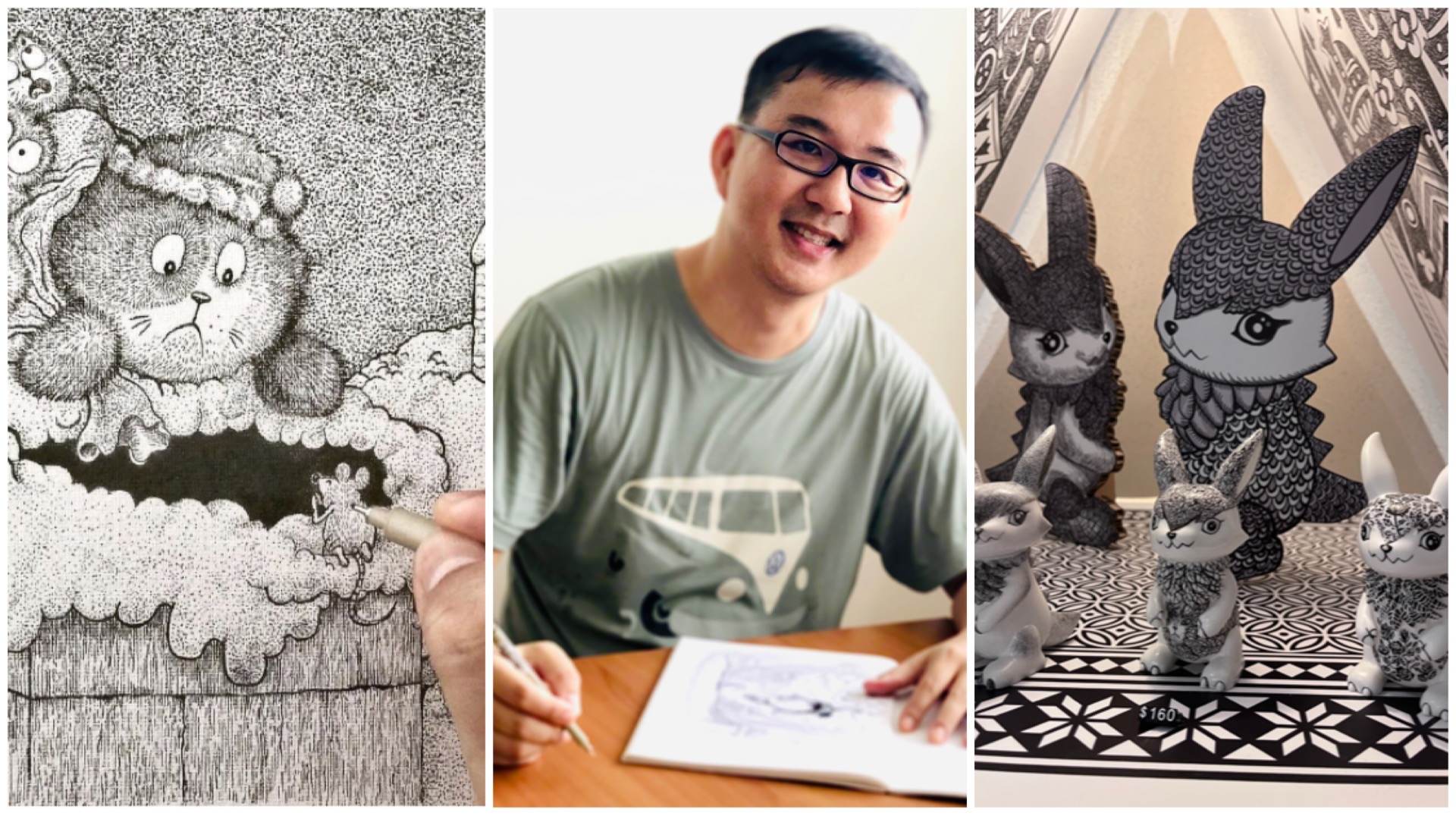Artist Behind The Art: Med Student Goes Viral With His Dystopian Cityscapes
"Present Participle", "Babel", "Burrow", and more. Remember these words, because they just might be the title of an exhibition of artworks at a gallery near you one day. But even more memorable are undoubtedly the illustrations themselves. And the mind and hand behind them belong to unassuming Chen Yiming.
The 19-year-old is a med student at the National University of Singapore (NUS) and a part-time artist (he prefers "hobbyist"), and has chalked up more than a 100k followers on Instagram, thanks to his engaging drawing-related content. He's even had juniors from school crediting his style as inspo for their final project.
The works are decidedly mesmerising: one's imagination runs wild just scrutinising the towering skyscrapers, dystopian-looking environments, complex architectural structures, and microscopic details galore.
The stark black-and-white contrast, the focus on buildings, and foreboding imagery all conspire to stir discussions about topics like "inequality", "class", and "climate".
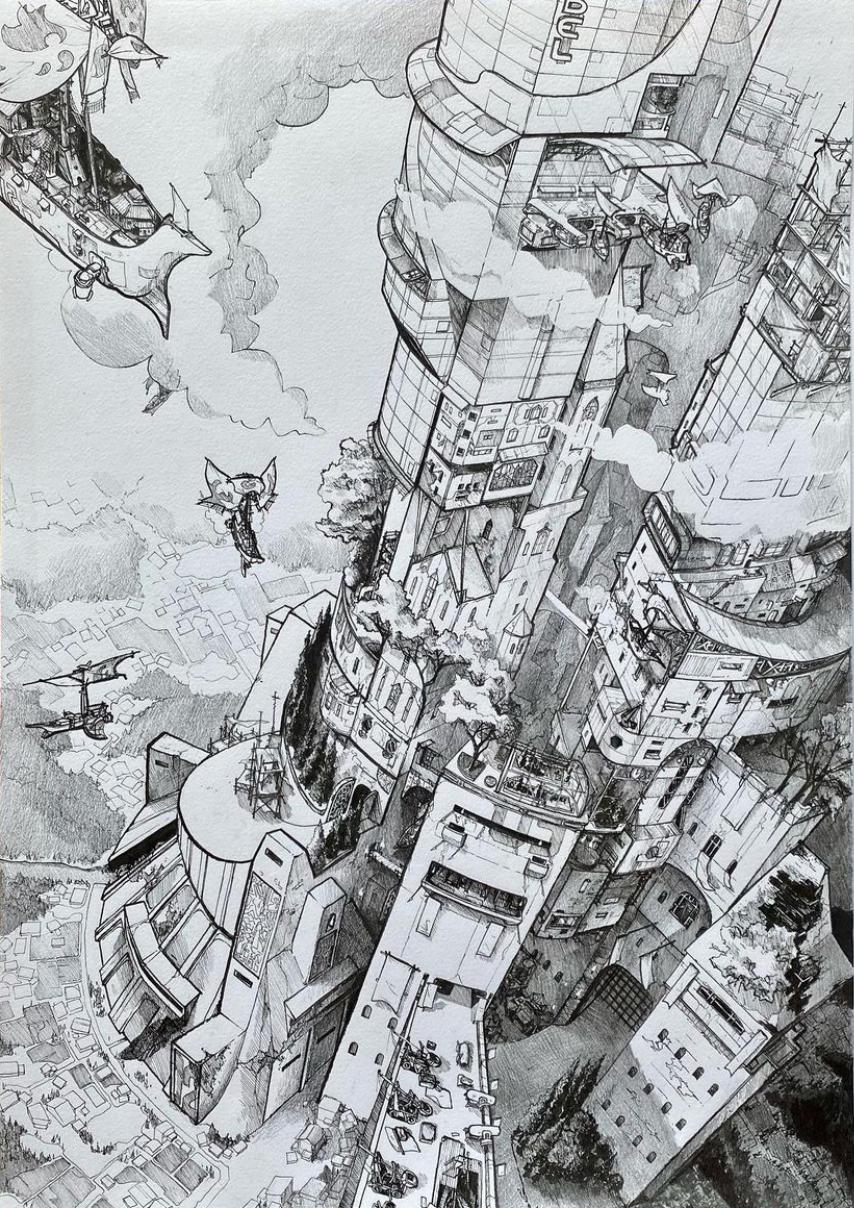
"The easiest way to get people to think about something is to disturb them, hit them in a way that they don't it see coming. When we're comfortable, we don't really like to think outside the box," says Yiming.
"So I want to draw communities in a way that makes people go like, 'Oh, damn that's a bit sad', and then they start to think, 'Oh, that's interesting, maybe this is our future' and stuff like that. That's the way I like to communicate - it makes people have a more genuine and deeper reaction to [the artwork]."

It's clear that Yiming has reflected deeply about the ideas behind his works, detailing his thoughts on them. He shares that the process differs for each piece.
"I'll try to find a complement. So if I have a meaning that I want to express, then I'll find a way to do it aesthetically. And if I have an aesthetic that I want to hit, then I'll find some way I can make that meaningful," he says.
We speak to Yiming about his first encounter with art, the confluence of the worlds of art and medicine, and the pressures of going viral.
Do you remember your very first encounter with art?
My parents are engineers. Before computerisation, there was a lot of drafting paper around because they would do a lot of drafting. And as a kid, you're just naturally curious. So I picked up pens and just started doodling with them.
I also liked watching "Cars" a lot. It was my favorite animated movie. So I drew a lot of Cars, to the point where there were entire files of just Cars drawings.
Then, it was Minecraft, and then there was a lot of Lego. I was a huge Lego fan back then - maybe it shows in my love for buildings!
How did you develop your style?
I tried out this style at the very beginning in Sec 2 because there was this artist I really liked online - Sam Gillett. He does a lot of building drawings. I was like, "Ooh, that's quite cool. I should try this." I remember the very first thing I drew was this cabin and a bunch of trees. And then slowly, slowly, it just developed into this. He followed me back [on Instagram] very recently. Super fanboy moment!
Just curious: how come you picked medicine over, say, architecture?
Oh, actually, funny story. My parents didn't want me to do medicine. I was very shocked because you hear all the time that that's what every Asian parent wants their kids to do - learn guitar, play tennis, play basketball and pursue medicine!
In Sec 4 and JC1, I was quite lost as to what I wanted to do. There were a few career paths that I considered: mainly, to teach, to do architecture, and also be a doctor. And among these three, medicine gave me the biggest challenge because I was quite a science student last time.
I was never really very good at talking or being interpersonal. So I thought, you know what, being a doctor kind of forces you to apply that science in a way where you have to talk to different people and hold a lot of sometimes very difficult conversations. And being a doctor was something that I could constantly see being meaningful in some way, and being very constructive to other people's lives.
The impact for something like architecture or teaching is a bit more indirect or delayed. For me, I need that direct impact to stay motivated, which is why, in the end, I chose medicine.
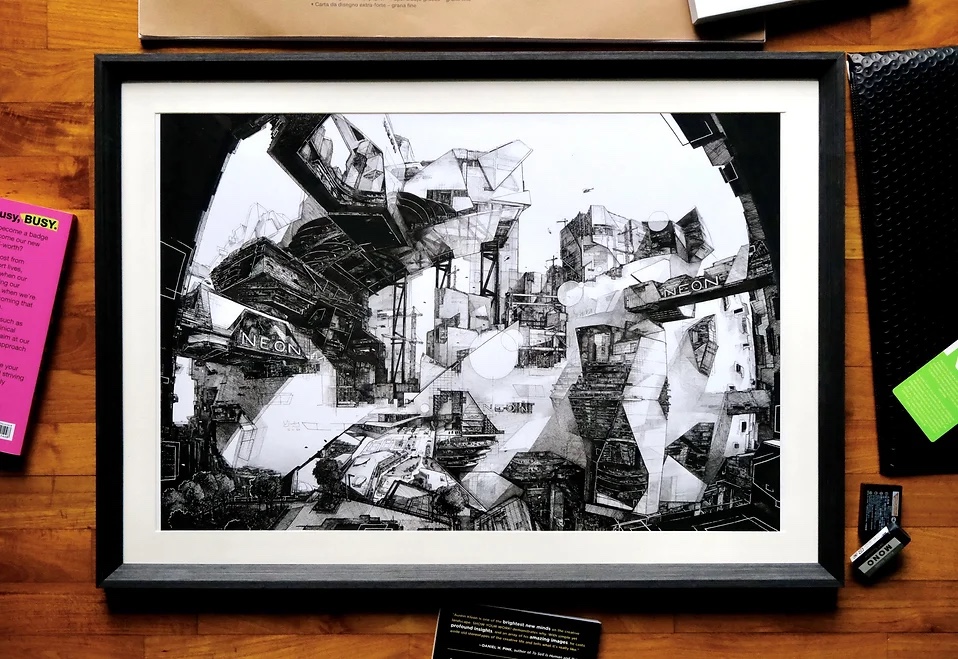
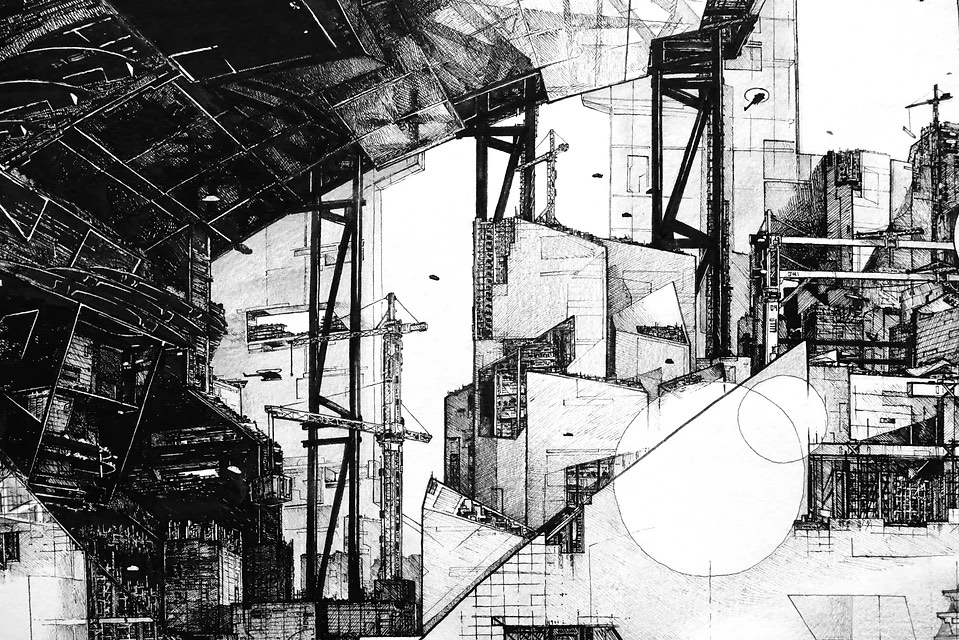
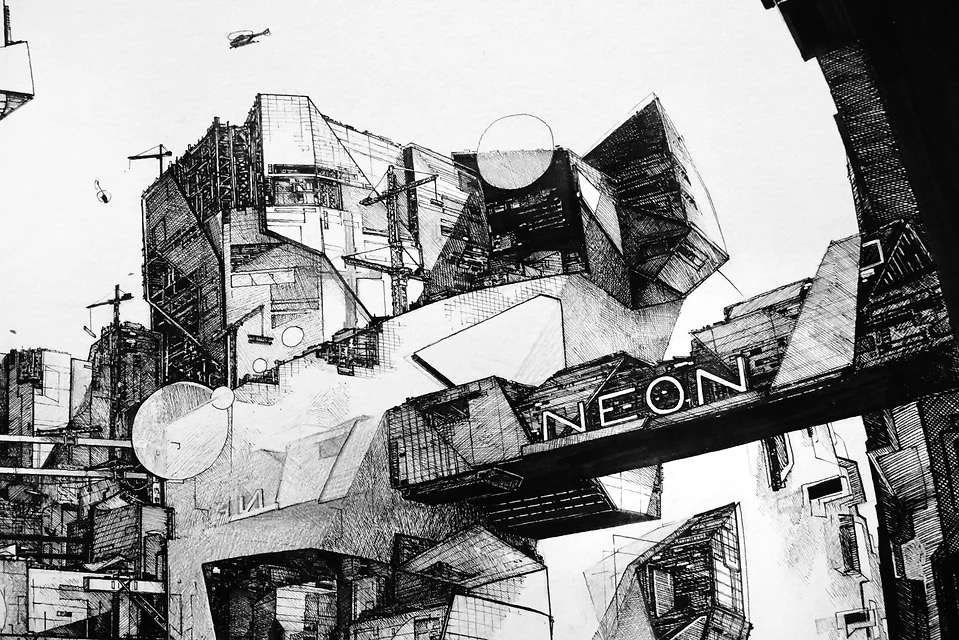
How has art helped you become a better student of medicine?
Drawing has made me quite a detail-oriented person, which I guess does help, because a lot of learning in med comes from self-learning. Sometimes when I draw, I have to think of very small details, like all the textures of the buildings. So I guess that has somehow maybe trained me a little bit to always ask: "Is there something else going on here? Let me go and find out and Google a bit about this."
Do you have a favourite piece?
I always come back to "Burrow". I didn't expect to love it that much. I wanted to make a very grim image. I think I was feeling a bit edgy at that point because it started with, I wanna do something about climate again. I don't know why, but I just keep going back to climate-related works.
And I think a lot of climate stuff was happening in the news also. It began as a very black piece also, because a bunch of my previous works are bright like "Babel". I didn't really use the blacks a lot, so I was like, okay, this is a good learning opportunity.
I wanted to express the meaning that right now humanity is stuck in this downward spiral of fossil fuels. And now, arguably, maybe we can still get out of it. But I wanted to depict a world where there is literally no way that we can get out of it.
And then I thought about how I was gonna express it aesthetically. So the idea of digging deeper, deeper underground and forcing everyone to live underground because the surface level was too hot. And then the story kind of built itself from there.
You're working on something called "Vital Signs", and the process behind it is different from "Burrow" and "Babel". Walk us through it!
I was very interested in the Shibuya crossing and the streets of Tokyo where there are advertisements everywhere. I wanted to include Singapore and a lot of Southeast Asian countries, but do it in like, a San Francisco style.
The work is called "Vital Signs", because I became very interested in different sign boards that we use in Singapore, from historical to more modern ones.
There's always some element of inequality and class in my work. So, from bottom to top, it's like a kind of class difference. At the bottom are the wet markets, the hawker centres, the streets that I grew up in, a lot of those small neighbourhood shop houses, HDBs. And slowly we get up to the malls, the older malls, the newer malls, and then like the CBD.
I wanted to show how different the signages are at these different levels of SES (socioeconomic status).
Congrats man - you've gone viral and had reels racking up over a million views! With more than 100k pairs of eyes scrutinising your works, got added pressure not?
I think having that amount of attention is, I guess, some pressure - pressure in a good way because I think it keeps me disciplined in creating content.
Content creation is quite a good start for student artists, like, very young artists who don't really know where to start. A lot of good has come out of people from Singapore noticing what I do just because I put it on Instagram. Honestly, I should have started earlier. A good piece of advice for maybe my juniors from the Art Elective Program (AEP), who want to pursue art as a side hustle, is to really just get on social media. I have no words for how transformative this has been.
There's a very good quote from this random YouTuber: “When you have one follower create like you have 1 million, and when you have 1 million, create as if you have one."
For the latest updates on Wonderwall.sg, be sure to follow us on TikTok, Telegram, Instagram, and Facebook. If you have a story idea for us, email us at [email protected].

